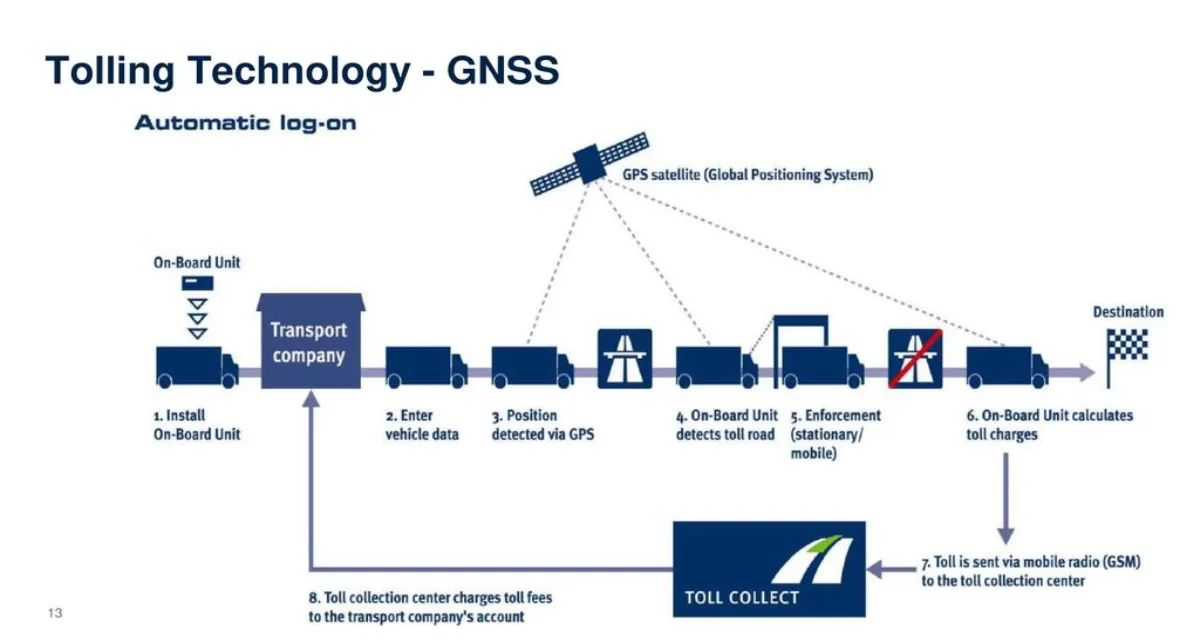

Toll collection plays an important role in the country’s automobile sector but currently, it is aligned to redefine the structure by transforming the FASTag with GNSS, A Global Navigation Satellite System. The country’s traffic and overcrowding are indeed an issue that was the necessity to be resolved on priority. Thus these two major technologies in the spotlight are FASTag and GNSS. While FASTag has been the standard for some time, GNSS represents a new and potentially transformative approach.
FASTag is a system that uses Radio Frequency Identification (RFID) technology. It involves placing a small sticker on the windshield of your vehicle. This sticker is scanned by electronic readers at toll booths. When your vehicle passes through a toll plaza, the system automatically deducts the toll amount from your pre-paid balance. This method is much faster than paying with cash, reducing wait times at toll booths.
However, FASTag is not without its issues. Vehicles still need to slow down and pass through physical toll booths, which can cause delays, especially during busy travel times. This means that even with FASTag, traffic congestion can build up at toll plazas, leading to longer travel times for everyone.
GNSS, or Global Navigation Satellite System, represents a significant leap forward. Instead of relying on physical toll booths, GNSS uses satellite technology to track vehicles' movements and calculate tolls based on the distance traveled. This system aims to eliminate the need for traditional toll booths entirely, allowing vehicles to travel continuously without having to stop.
The GNSS system works by communicating with satellites to pinpoint a vehicle’s location and determine the distance covered on toll roads. This means that tolls can be calculated more dynamically and applied without the need for physical infrastructure at every toll point. Additionally, GNSS promises greater flexibility in payment methods, potentially allowing for both prepaid and postpaid billing options.
Initially, GNSS will not replace FASTag immediately. Instead, the two systems will work together in a hybrid model. This approach is designed to ensure a smooth transition for users who are already accustomed to FASTag. Vehicle owners will not need to change their FASTags right away. Instead, over time, as GNSS technology becomes more widespread, drivers will be able to adopt GNSS-enabled devices if they choose.
This phased transition allows both systems to operate simultaneously, giving users time to adapt to the new technology while still benefiting from the efficiency improvements of GNSS.
Before GNSS technology is fully rolled out, it has undergone several pilot studies to assess its effectiveness. For example, tests have been conducted on the Bengaluru-Mysore section of NH-275 in Karnataka and the Panipat-Hisar section of NH-709 in Haryana. These studies are crucial for evaluating how well the system works in real-world conditions and addressing any potential issues before a full-scale implementation.
On June 25, 2024, an international workshop was held to discuss the findings and gather feedback from various stakeholders. Additionally, a global expression of interest (EOI) was issued on June 7, 2024, to invite broader participation from industries and technology providers. This global engagement is aimed at refining the system and ensuring its success.
To summarize, The comparison between FASTag and GNSS highlights a significant evolution in toll collection technology. While FASTag has been a step forward in reducing toll plaza delays, GNSS promises to revolutionize the process by eliminating physical toll booths and offering more flexible payment options. As the two systems work together during the transition period, users can expect a gradual shift towards a more seamless and efficient travel experience. The ongoing research and pilot programs underscore the commitment to making toll collection smarter and more convenient for everyone.
Also Read: